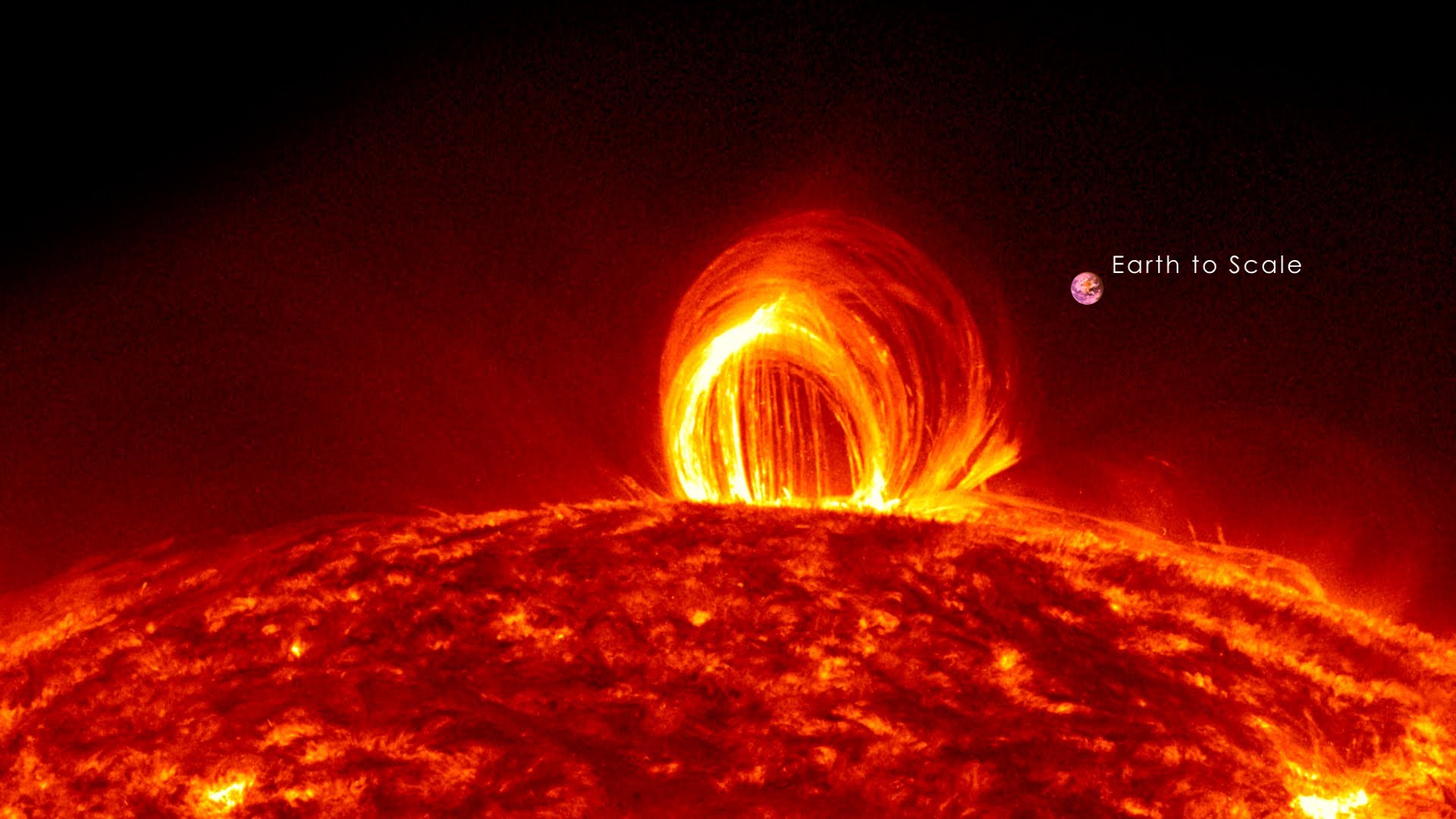Elephants Warn Tourists of Tsunami
Description: According to eyewitnesses a group of elephants heard the infrasound of an approaching tsunami and moved to safety. There are numerous accounts of animals sensing natural hazards, through sound waves or vibrations. This phenomenon could be used to investigate natural hazards and students could use these stories to build an early-warning system to protect humans from similar threats.
Web Resource: Tsunami Warnings and Predictions - Wikipedia
White Blood Cell Chases Bacteria
Description: In this dramatic movie from the 1950's a neutrophil chases and engulfs a bacteria. White blood cells like this neutrophil are an important part of our immune system. They will migrate to a site of infection or inflammation through chemotaxis and eliminate invading microbes. This phenomenon will hopefully lead to a number of student questions like: How does the white blood cell follow the bacteria? What happens once the microbe is engulfed? etc.
Web Resources: Neutrophil Chasing Bacteria - About the Movie, Neutrophil - Wikipedia
Airpod Case Design
Description: The Airpod charging/storage case is an elegant solution to a problem using magnets. When the Airpod is inserted into the case it is pulled into charging position using a magnet. The lid is also held in place using a magnet. Simple designs that students are familiar with should be used as stepping stones for individual student designs.
Web Resources: Airpods - Apple, Airpods iFixit Teardown
By Maurizio Pesce from Milan, Italia (New Apple AirPods with iPhone 7) [CC BY 2.0 ], via Wikimedia Commons
Hox Genes
Description: Hox genes control the body plan of organisms with each hox gene coding for a specific body part. Hox gene mutations (e.g. a fruit fly with a leg in the place of an antenna) can lead to investigations on development. Similarities in hox genes across various animals can show phylogeny.
Web Resource: Hox genes - Wikipedia
3D Tour Of Constellations
Description: Constellations are groups of stars that form imaginary shapes in the night sky. However the constellations only appear in that specific shape because we are viewing them from one location in the Universe. In this short video common constellations are toured in 3D showing varied shapes depending on the perspective of the viewer. Students can observe this phenomenon using the Interactive 3D Map of the Universe. The brightness of a star depends on the type, size, and distance from Earth.
Web Resource: Interactive 3D Map of the Universe
Slow Motion Golf Ball Collision
Description: In this dramatic slow motion video a golf ball collides with a piece of steel showing a large amount of compression. Different golf balls are designed to have varying amounts of compression based on the desired behavior of the ball. In a kindergarten class golf balls or baseballs are great examples of pushes causing changes in the motion of an object. In the upper grades this could be a great example of a collision. Students could investigate the behavior of different golf balls (or clubs) and even do some designing themselves.
Web Resource: Golf Ball - Wikipedia
Candle-Powered Car
Description: The candle-powered car is an application of the Seebeck Effect. This effect is the result of thermal energy conversion directly into electricity. This phenomenon can be used in elementary school to show energy conversion from heat to electricity to the kinetic energy of the car. A more detailed explanation will be required in high school related to electron response to temperature differences in different materials. The Seeback circuit used in this candle-powered car can also be connected to a voltmeter and used as a temperature sensing thermocouple.
Web Resource: Seebeck Effect, Candle Car Kit - Amazon
Trichroic Prism
Description: A trichroic prism splits light into three beams of light with different wavelengths (or colors). These prisms are used in some video cameras to send different colors of light to different color sensors. The prisms are coated with special coatings to filter and transmit different wavelengths of light. This device could be used to investigate interactions of light with various materials to in increasing complexity K-12.
Web Resources: Dichroic prism - Wikipedia, Trichroic Prism - Amazon
The Shadow Illusion
Description: Derek Muller from Veritasium uses the shadow illusion to show that the size and shape of a pinhole does not affect the image projected. Most of the participants believe they are looking at the shape of the hole rather than the shape of the Sun projected on the wall. This could be an excellent phenomenon to start a unit on light or vision.
Web Resource: Pinhole camera - Wikipedia
Self-Leveling Pool Table On Cruise Ship
Description: This pool table on the cruise ship Radiance of the Seas uses gyroscopic leveling to keep the pool table level during rough seas. This design solution could be used to start a unit on waves. After learning more about the amplitude, wavelength and energy of waves students could attempt to build a similar solution of their own.
Web Resources: Gyroscope used for self-leveling cruise ship pool table - Geek.com, Gyroscope - Wikipedia
Rubens' Tube
Description: The Rubens' tube was invented by German physicist Heinrich Rubens in 1905. It is a tube that is sealed at both ends in includes a flammable gas like propane. A speaker is attached to one end of the tube so sound waves can be transmitted thought the air/gas mixture. Small holes are drilled in the top of the tube and when the air/gas mixture emerges it creates a flame. As sound is played standing waves are created in the flames that change as the frequency of the waves is changed.
Web Resource: Rubens’ tube - Wikipedia
The Visual Microphone: Passive Recovery Of Sound From Video
Description: In this amazing demonstration researchers are able to extract audio from the video of an object (a plant, an empty bag, etc.) in the same room as the sound. The sound waves vibrate the object which is made visible through tiny movements processed with a graphic algorithm. This could be used as a phenomenon in a unit on sounds, waves, and information.
Web Resource: Extracting audio from visual information - MIT News
Solar Cars
Description: Solar cars use energy from the sun and photovoltaic cells to transport humans. Large solar cars are generally built by universities to compete in solar car races but mini-solar cars can be built in any science classroom. The photovoltaic cells convert solar energy into electricity which runs an electric motor. Energy conversion can be studies within the unit and a solar car design challenge can be used as a culminating design challenge. The criteria and constraints can be modified to the age of the students in the class.
Web Resource: Solar Car - Wikipedia
The Potential And Ethics Of CRISPR
Description: CRISPR stands for Clustered Regularly Interspaced Short Palindromic Repeats. It is an immune system in bacteria that has been co-opted by scientists to create a powerful DNA editing tool. It is a powerful tool that can be used in research and may eventually eliminate certain diseases. However it also could allow humans to create designer babies and through the use of gene drives eliminate certain problem species (like mosquitoes) forever. CRISPR, as a new technology, can be used to give meaning to a unit on inheritance and variation.
Web Resources: CRISPR - Wikipedia, The Ethics of CRISPR - Fast Company
Reusable Heat Packs
Description: This phenomenon uses a supersaturated solution of sodium acetate. Clicking the metal disc releases a small number of crystals of sodium acetate which act as nucleation sites for the crystallization of the sodium acetate into a hydrated salt. Energy is released from the crystal lattice. The heating pack can be placed in boiling water and the sodium acetate can be dissolved again. This phenomenon shows how bond energy can be released. It also shows the importance of chemical engineering and could lead to a section where students design a device (or application) of their own.
Web Resource: Chemical Heat Pack - Wikipedia, Snappy Heat - Amazon
The Immortal Cells of Henrietta Lacks
Description: This TEDEd video written by Robin Bulleri details the story of Henrietta Lacks and the HeLa cell line. A more detailed account of this story can be found in Rebecca Skloot's book The Immortal Life of Henrietta Lacks. This story can be used to illustrate the role of cells in the proper functioning, growth, and reproduction of living organisms. It also can be used to explore ethics within scientific research.
Web Resources: HeLa - Wikipedia, The Immortal Life of Henrietta Lacks - Amazon
Daniel Kish Uses Echolocation To Navigate
Description: Daniel Kish lost his eyes to cancer before he was 13 months old. He uses echolocation by listening to the reflection of sound waves to navigate in 3D space. He can even ride a bicycle. In addition to being an incredible story of perseverance this is a perfect phenomenon for a unit on waves. Sound waves are reflected, absorbed, and transmitted through objects in the environment and Daniel can sense the changes in energy of the returning waves.
Web Resource: Daniel Kish - Wikipedia
The Big Bang Theory
Description: The Universe as we know it started with the Big Bang, one of the greatest phenomenon in all of science. Students should attempt to construct an explanation for the Big Bang based on evidence from light spectra, the motion of distant galaxies, and the composition of matter in the universe. The matter in the Universe comes from the life cycle of stars.
Web Resource: The Big Bang - Wikipedia
Solar Flares, Sunspots, and the Solar Cycle
Description: A solar flare is a sudden increase in the Sun's brightness. The flare ejects ions, electrons, and atoms into space which reach the Earth and cause auroras and may disrupt communication. The massive amount energy released in a solar flare originally comes from nuclear fusion in the Sun's core but the mechanism of energy transfer is not fully understood. Solar flares tend to emanate from dark areas on the Sun known as sun spots. Sun spot numbers cycle on an 11-year period known as the solar cycle. Students could discover this cycle on their own, make predictions based on the cycle, or attempt to connect these phenomenon to the nuclear fusion driving the entire process.
Web Resources: Solar Flare - Wikipedia, Solar Cycle - Wikipedia
Woman Hit by Meteorite
Description: Ann Hodges has the distinction of being the only human to have been hit by a meteorite. While Mrs. Hodges was napping on the couch the meteorite impacted her house, bounced off a table and hit her in the hip. She was able to walk away from the incident. Scientists can learn about the composition of the early solar system and the formation of the Earth by studying these primordial objects orbiting in space.
Web Resource: Sylacauga (meteorite) - Wikipedia




















